Golden Age Project PRE-73 Premier Handleiding
Golden Age Project
Receiver
PRE-73 Premier
Bekijk gratis de handleiding van Golden Age Project PRE-73 Premier (2 pagina’s), behorend tot de categorie Receiver. Deze gids werd als nuttig beoordeeld door 91 mensen en kreeg gemiddeld 5.0 sterren uit 46 reviews. Heb je een vraag over Golden Age Project PRE-73 Premier of wil je andere gebruikers van dit product iets vragen? Stel een vraag
Pagina 1/2

W W W . G O L D E N A G E P R O J E C T . C O M I
PRE-73 PREMIER
INTRODUCTION
Congratulations on choosing the Golden Age Project PRE-73 PREMIER microphone preamplifier!
The PRE-73 PREMIER is a one-channel vintage style microphone-, line- and instrument preamplifier. The
signal path uses only discrete components like resistors, capacitors and transistors. The in- and output is
transformer balanced, using two different transformers, each one optimized for its purpose. This is the way
audio components were built before integrated circuits became available.
The circuit used in the PRE-73 PREMIER is similar to the preamp section in the classical 1073 module with
a corresponding sound character that is warm, punchy, sweet and musical. These classic characteristics
have been heard on countless recordings through the years and it is a versatile sound that works very well
on most sound sources and in most genres. The essence of this sound is now available at a surprisingly low
cost, making it available to nearly everyone.
FEATURES
- Vintage Style electronics. No integrated circuits in the signal path.
- Maximum gain in mic mode is 80 dB, enough to handle passive ribbon mics with quiet sound sources.
- Gain switch range is 20 - 80 dB. Line mode switch, gain is reduced by 30 dB in line mode.
- Selectable two position high frequency air eq boost mode, 3 or 6 dB @ 30 kHz.
- Selectable 6 dB/octave high pass filter at around 80 Hz (HP1) or 200 Hz (HP2).
- 14 dB output pad allowing the user to overdrive the output stage and transformer.
- Switchable impedance in mic mode, 1200 or 300 Ohm, will change the tone of most mics. The input impedance in line mode is 10 kOhm.
- Switchable phantom power and absolute phase.
- A high-impedance instrument input for any sound module, electric guitar or bass.
- A simple but effective 4-step LED output level meter.
- The output level control makes it possible to make fine gain adjustments and also to overload the main gain stage(s) for more character.
- Combo XLR/TRS input jack and separate output XLR and TRS jacks for flexible connections.
- Insert jack for inserting EQ´s and other units.
- Selectable 600 Ohm output termination.
- Classic style knobs and buttons.
- Prepared for mounting one or two units in the UNITE PREMIER rack kit. It can also be mounted in one of the other UNITE rack kits and combined
with the red and black Golden Age Project products.
- Connector free internal wiring, all connections except the ones to the gain switch
are soldered for the purest signal and most longterm stable signal path.
- UK made Carnhill input and line output transformers.
- Polystyrene capacitors in the amplifier circuits.
- Tantalum capacitors in the signal path.
- Beefed up power supply.
- Sturdy toggle switches with gold plated contacts.
- External power supply to avoid interaction with the audio circuits and transformers.
- A solid build quality that will last many years of normal use.

W W W . G O L D E N A G E P R O J E C T . C O M II
CIRCUIT DESCRIPTION
The signal first enters the input trans-
former. The primary of the transformer
has two windings that are either con-
nected in series or in parallel which
results in an input impedance of either
1200 Ohm or 300 Ohm in MIC mode.
A resistive balanced -30 dB pad is
inserted before the transformer in LINE
mode.
The transformer is followed by two input gain stages. For gains
up to 50 dB, only one of them is being used. For gains above 50
dB, the second gain stage is inserted in the signal path. Both gain
stages uses only three transistors each.
The signal then goes to the insert jack and from there to the
output level potentiometer and then to the output stage. This stage
again only uses three transistors, the last one in the chain is a
hefty 2N3055 power transistor run in class-A mode, driving the
output transformer.
So, all in all, the complete signal chain contains a maximum of
only nine active elements. Compare that to the big number of tran-
sistors that are usually used in one single integrated circuit!
MODERN VERSUS OLD
It is true that there are some great IC´s available today that
achieves very low levels of static and dynamic distortion. The
simple circuits that the PRE-73 PREMIER uses, and even more so
the transformers, cannot match the low distortion specifications of
modern IC´s.
It is the distortion components that imparts a sound character
to the audio signal and, if the distortion components are of the
right type, this is a good thing since it makes the recorded voice
or instrument sound “better”, more musical, more pleasing to
the ear. This is one reason why vintage style units are so popular
today.
This is not to suggest that modern, transparent sounding audio
circuits is a bad thing, sometimes they are prefered over colored
ones. It´s all about taste and it depends on the genre. For most
modern music styles, color and character is definitely a good
thing. And doesn´t it feel good to use audio components built
according to the old, minimalistic approach where one can follow
the signal from one discrete component to another?
USING THE PRE-73 PREMIER
Using a preamplifier is not rocket science. Find some points below
to help you in getting the maximum out of the PRE-73 PREMIER:
- Connect the cable from the power supply to the 24V AC connec-
tor on the back panel of the PRE-73 PREMIER. Power on the unit
with the POWER switch on the front panel.
- Connect your Mic or Line input source to the input XLR/TRS
combo jack on the back panel.
- Select MIC or LINE mode by the MIC/LINE switch.
- Engage one of the positions of the High Pass filter if you want
to roll off the lower frequency range. Set the switch in the center
position to remove the high pass filter from the signal path.
- Engage one of the two positions of the AIR eq boost if you want
to add some level in the upper frequency range. The boost is cen-
tered at around 30 kHz. The switch center position = OFF.
- If you want the smallest amount of coloration, always set the
OUTPUT level potentiometer at or close to maximum and adjust
the output level with the stepped GAIN switch.
- If you want more character, turn the OUTPUT level potentio-
meter counterclockwise and increase the gain with the GAIN
switch. This will drive the input gain stage(s) harder and provoke
more character from them.
- You can also overdrive the output stage and the output trans-
former for even more character by engaging the OUTPUT PAD.
It will lower the level after the output transformer with about 14
dB, the idea is to compensate for that by driving the output stage
and transformer harder, i.e. increase GAIN and/or OUTPUT by the
same amount.
Please note that the output pad lowers the level with 14 dB only
when the internal termination jumber (JP1, see info below) is
engaged, the reason is that it is designed to work into a 600 Ohm
load.
- Instruments can be connected to the TS input jack on the front
panel, it has an input impedance of about 100 kOhm. Press the
DI switch to engage this input. A source at the back can remain
connected.
- Engage 48 V phantom power for any mic that needs it. It is a
good procedure to always disengage the phantom power and wait
for about 10 seconds before unplugging the mic.
- When the LOW-Z switch is engaged, the input impedance of the
input in MIC mode drops from 1200 Ohms to 300 Ohms. This will
change the tone of most mics and will give you one more sound-
shaping option. It will also increase the signal level.
- The phase switch simply reverses the phase by reversing the
wires from the secondary winding of the output transformer.
Reversing the phase of a signal is useful in many situations, one
example is phase reversing the lower mic of a snare drum to
make it sum in phase with the upper mic.
- There is an unbalanced insert jack located on the back panel
where you can insert equalizers and other external effect units. It
has an operating level of about -10 dbu to -18 dBu.
Send is on “tip” and return is on “ring”.
- The output transformer used in the PRE-73 PREMIER is made
for having an ideal load of about 600 Ohm. The input impedance of
most modern units is 10 kOhm or more.
The PRE-73 PREMIER therefore has a 600 Ohm output termination
resistor that is engaged by the jumper (JP1) located just behind
the XLR output jack. The termination reistor will lower the ouput
level slightly and also affect the upper frequency range,
Remove the jumper if the PRE-73 PREMIER feed a unit with a 600
Ohm input impedance.
WARRANTY
The PRE-73 PREMIER is built to last. But as in any electronic
device, components can break down.
There is a 1,0 A, slow blow fuse located inside the unit, close to the
24 V AC input jack. If the unit dies, check this fues. If it has blown,
replace it with a new one.
You can also try another 24 V AC adaptor if you have one available
If this doesn´t help, or if the unit has another problem, it will need
repair and you should then contact the reseller where you bought
the unit.
The warranty period is decided by the Distributor for your country.
The Distributor will support Golden Age Project resellers and end
users with repairs and spare parts.
REGISTRATION
You are welcome to register your unit at our website:
www.goldenageproject.com
You are also welcome to visit: www.goldenagepremier.com
---------------------------
Thank you for choosing the PRE-73 PREMIER!
I hope it will serve you well and that it will help you in
making many great sounding recordings.
Bo Medin
Vintage character for modern ideas!
Product specificaties
| Merk: | Golden Age Project |
| Categorie: | Receiver |
| Model: | PRE-73 Premier |
Heb je hulp nodig?
Als je hulp nodig hebt met Golden Age Project PRE-73 Premier stel dan hieronder een vraag en andere gebruikers zullen je antwoorden
Handleiding Receiver Golden Age Project

14 Juni 2023

10 Februari 2023

27 Januari 2023

16 December 2022

23 November 2022

2 November 2022

14 Oktober 2022
Handleiding Receiver
- Renegade
- Dreambox
- Universal Remote Control
- QTX
- JL Audio
- StarTech.com
- Quad
- Sony
- Vivotek
- Optoma
- Shure
- Fredenstein
- Hartke
- Kogan
- KanexPro
Nieuwste handleidingen voor Receiver
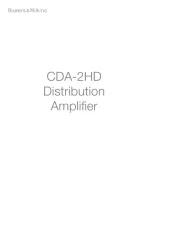
18 September 2025
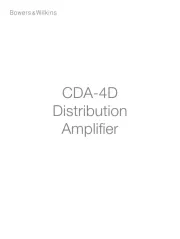
16 September 2025
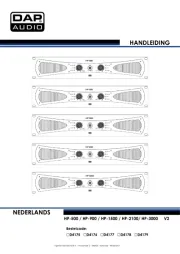
16 September 2025

16 September 2025
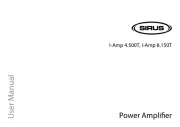
10 September 2025

8 September 2025

8 September 2025

8 September 2025
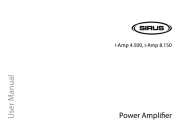
8 September 2025

8 September 2025
